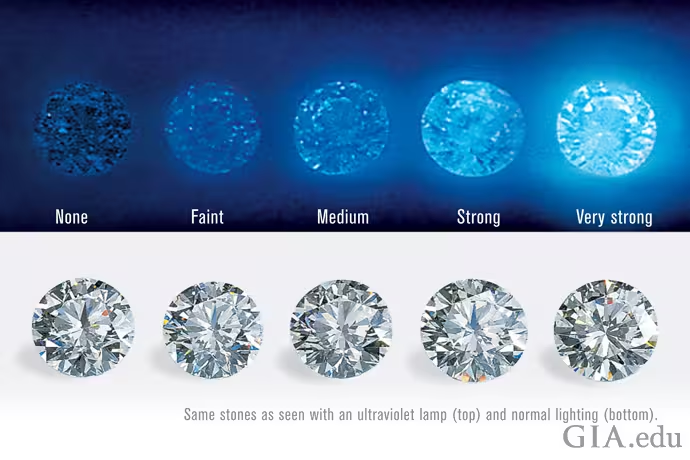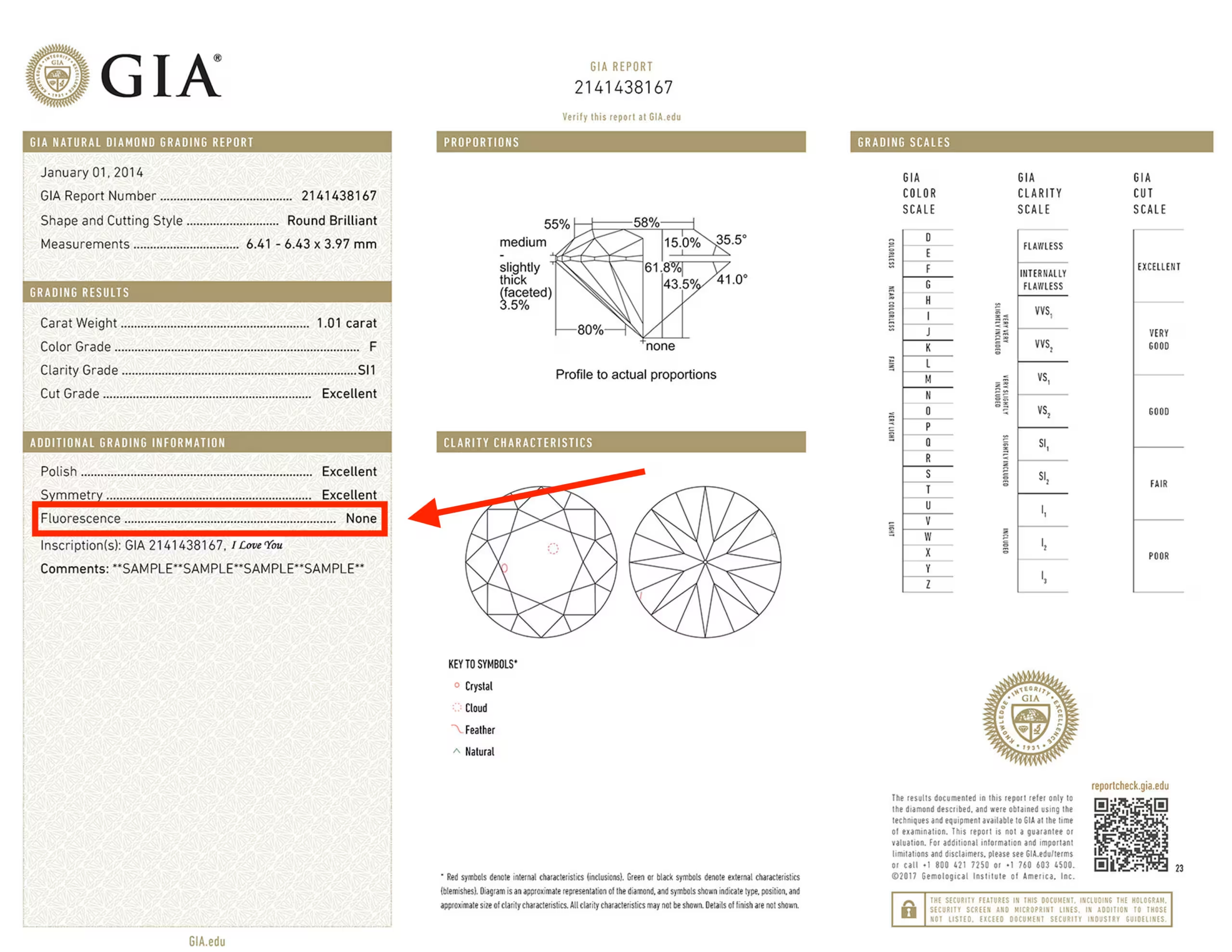Diamond Fluorescence: Myths, Facts, and Impact
When searching for the perfect diamond engagement ring or other diamond jewelry, you may come across the term “diamond fluorescence.” This often misunderstood property can be an important consideration when selecting a diamond, especially if you are looking for something truly unique and special. In this article, I will dispel some myths, present the facts, and help you make an informed choice when selecting a diamond.
What is diamond fluorescence?
The term fluorescence originates from the mineral fluorite. When studying this mineral, scientists discovered fluorescence, which is the emission of light by a substance that has been previously excited by ultraviolet or visible light. Diamond fluorescence refers to a diamond’s ability to glow under ultraviolet light. This property varies, offering blue, white, yellow, green, or red hues, but only when illuminated with UV light. Despite its rarity, fluorescence is one of the primary ways to distinguish natural diamonds from lab-grown diamonds.

Common Myths About Diamond Fluorescence
There are several myths surrounding diamond fluorescence that can be confusing. It’s important to distinguish fact from fiction to make the best choice:
- Myth: All diamonds have fluorescence.
- Fact: Most diamonds do not exhibit fluorescence. In a GIA study examining over 26,000 diamonds, it was found that only about 25% to 35% displayed any fluorescence under a standard long-wave UV lamp.
- Myth: Diamond fluorescence is detectable regardless of lighting conditions.
- Fact: Fluorescence only appears under a UV lamp and disappears when the light source is removed.
- Myth: Strong blue diamond fluorescence is undesirable.
- Fact: GIA studies show that strong blue fluorescence can actually be beneficial, improving the appearance of some diamonds with a yellowish tint under normal viewing conditions.

How does fluorescence affect a diamond’s value?
The impact of fluorescence on a diamond’s value varies. Very strong fluorescence can sometimes give a diamond a cloudy or milky appearance, reducing its value. However, blue fluorescence can improve the color of diamonds with a yellowish undertone, making them appear visually whiter and therefore more valuable. Keefirivunts offers the best selection of both natural and lab-grown diamond engagement rings, allowing you to create an engagement ring that suits your personal budget, style, and values. Our collection of diamonds, including lab-grown diamonds, is certified by the most prestigious laboratories in the diamond industry – the Gemological Institute of America (GIA), HRD Antwerp, or the International Gemological Institute (IGI).
Should I buy a diamond with fluorescence?
Diamond fluorescence is one of many aspects to consider when shopping for an engagement ring. The truth is, there’s no absolute right or wrong answer. Fluorescence adds a unique character to a diamond, making it special. While some argue that strong fluorescence can decrease a diamond’s value, it’s important to note that such diamonds, which make up only 25-35% of all diamonds, are actually rarer. This is where Keefirivunts comes in. Our goal is to support you on your journey to find that unique diamond that symbolizes your extraordinary relationship and love. We understand that every couple is unique, and that’s why we are dedicated to providing personalized service to ensure you find your perfect match.

